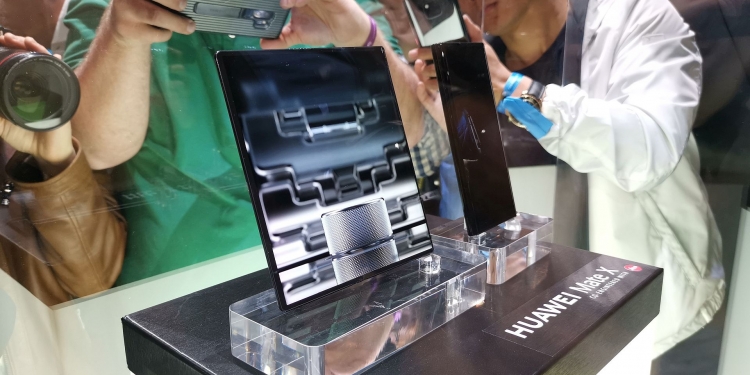Huawei lifted the veils off its very own folding smartphone today and it is a very impressive piece of kit. The device is packed with all the latest and best technology Huawei has to offer. Combined, the technology and specs does indeed make the Mate X worthy of its “World’s Fastest Foldable 5G Phone” claim.
The Mate X features Huawei’s top-of-the-line Kirin 980 processor, 8GB of RAM and 512GB of onboard storage. The storage is expandable up to an additional 256GB but not using the more popular Micro SD card format, instead the Mate X accepts Huawei’s proprietary and less popular NM card.
The Mate X also brings with it the world’s fastest 5G modem developed by Huawei, the Balong 5000. The Balong 5000 is the worlds first 7nm 5G modem and when connected to a capable 5G network, allows the Mate X to achieve download speeds of up to 4.6Gbps – that’s Gigabits per second! – while competing 5G modems can only achieve half that speed.
Of course, the most interesting piece of technology on the Mate X is its 8-inch foldable OLED display. The display unfolds to an 8-inch 2480×2200 resolution display with a squarish 8:7.1 aspect ratio. When folded, the display is divided into two panels – a 6.6-inch 2480×1148 19.5:9 front panel and a narrow 25:9 aspect ratio, 6.38-inch 2480×892 rear panel which will mainly be used for taking selfies.
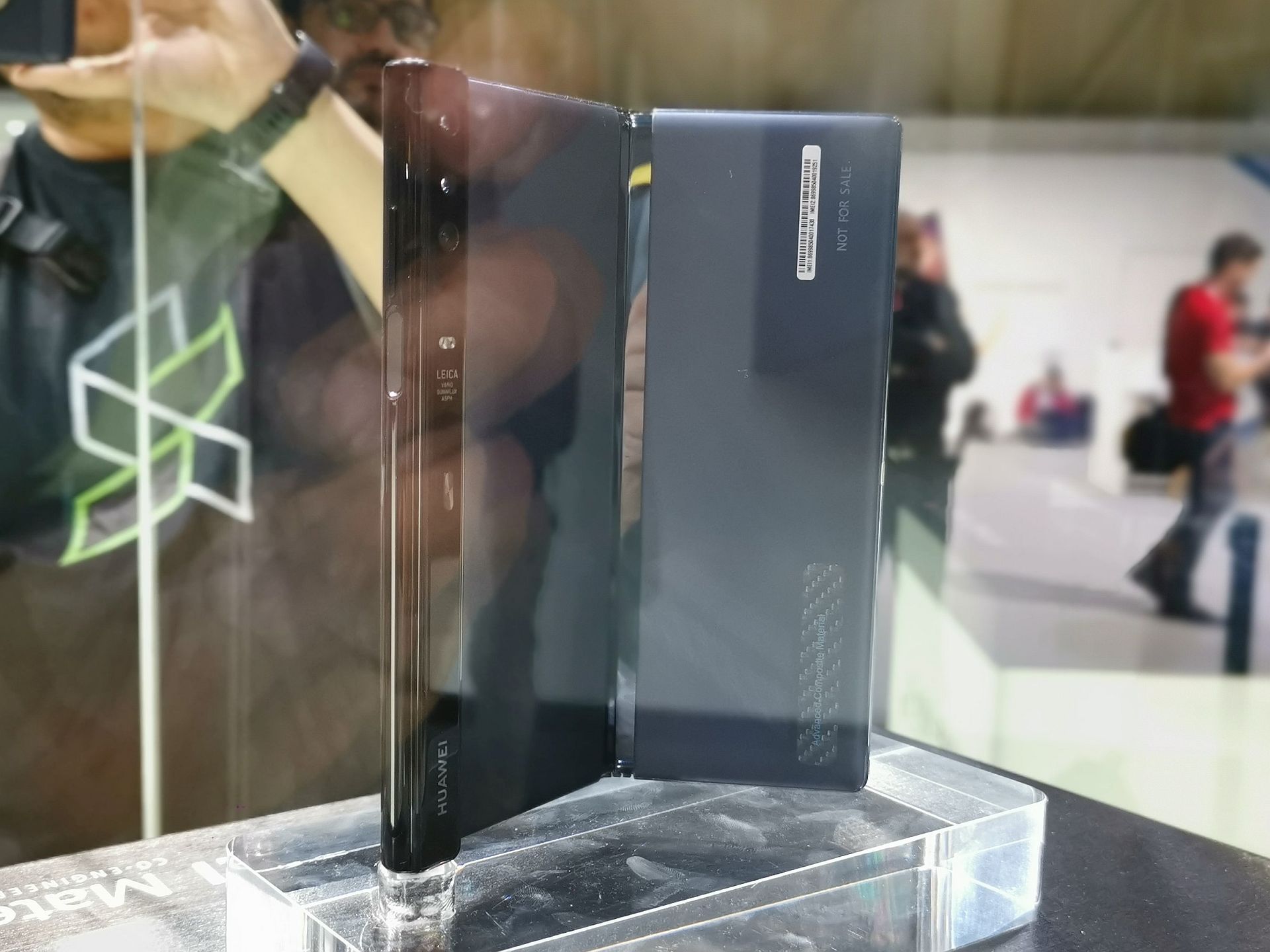
In comparison, the Galaxy Fold has a 7.3-inch 2048×1536 foldable display and a small 4.6-inch 1600×900 front facing display. As it stands, the Mate X trumps the Galaxy Fold in display size both folded and unfolded.
In the camera department, the Huawei Mate X gets a triple camera setup that I suspect is very similar to the one you get on the Mate 20 pro. It features a 40MP wide angle lens, a 16MP ultra-wide-angle lens and an 8MP telephoto unit and because there’s a full 6.38-inch display sitting alongside the cameras, the cameras can be used for taking selfies as well. This potentially makes the Mate X a device with one of the best selfie cameras you can get. On the same side as where the camera is housed, Huawei has also added a side-mounted fingerprint scanner that doubles as a power button.
Like the Mate 20 Pro, the camera features optics co-developed with Leica and you can expect the Mate X to be just as good as the Mate 20 Pro when it comes to taking pictures.
Powering the device is a 4,500mAh battery. To charge the rather large battery, the Mate X supports a powerful 55W charger that can charge the device from zero to 85% capacity in just 30 minutes.
A very impressive device, folded or unfolded
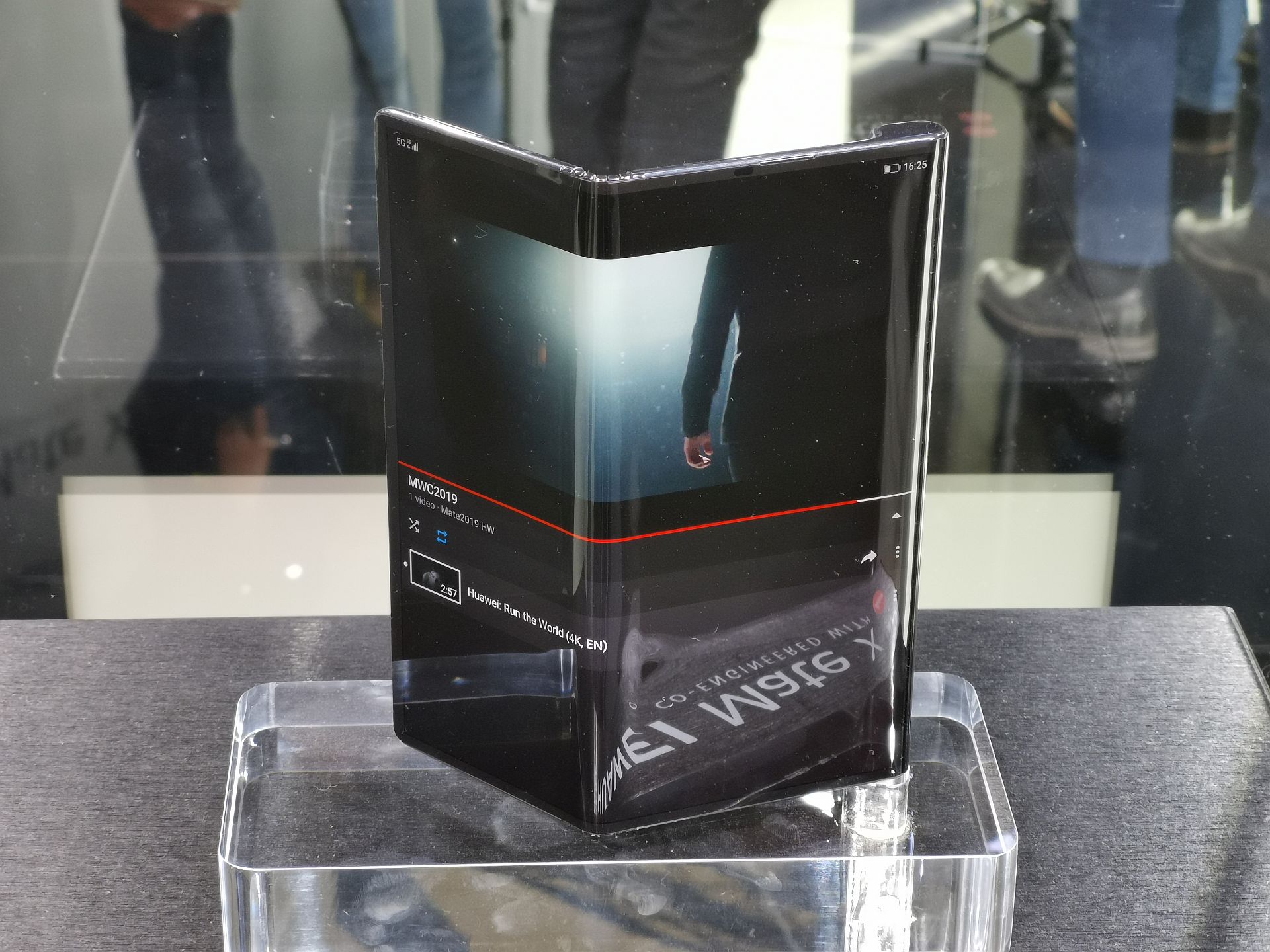
The first thing that strikes me about
The display on the Mate X, whether folded or unfolded, is bright, sharp, vibrant and clear. From what I can see, the foldable display trades off very little in terms of viewing enjoyment. While the display itself is virtually bezel-less, the problem I have with it is the rather odd square 8:7.1 aspect ratio. This makes viewing videos and movies slightly compromised with the presence of massive black bars on the top and bottom of the display. When folded, however, the viewing experience is just as good as any top-rate flagship smartphone you can get today. Other than that, from my brief encounter with the Mate X, I don’t have much to complain about with regards to the display.
I also like that the display folds to form two panels. The front 6.6-inch panel is a flagship-class display, it is larger and has more pixel density than some flagship devices today. The rear 6.38-inch panel has a narrow aspect ratio but is still larger than most phones.
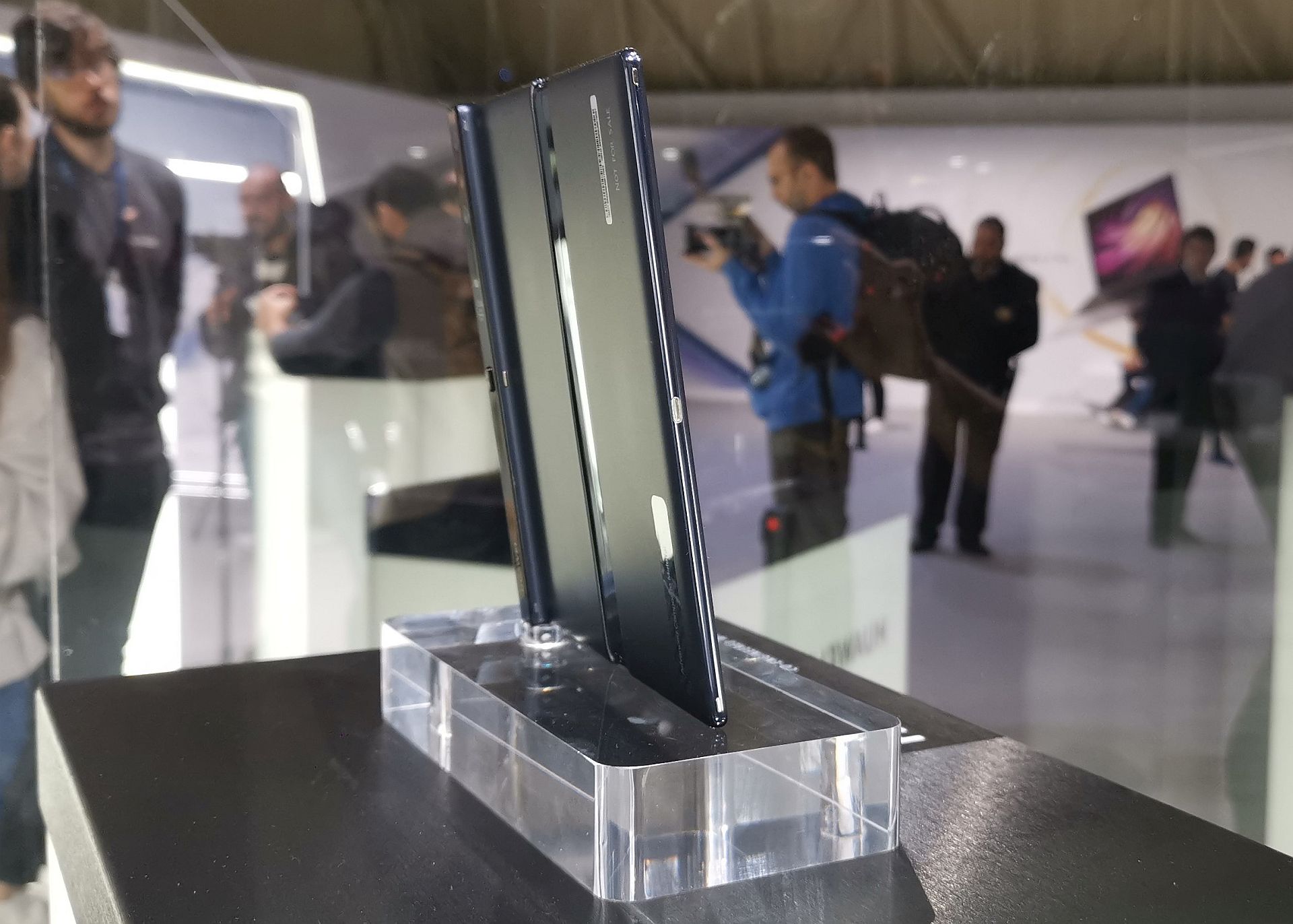
During the product presentation, Richard Yu, the CEO of Huawei’s business group, said that Huawei took three years to perfect the specially designed hinge on the Mate X. Huawei calls it the Falcon Wing hinge and it comprises of over one hundred components allowing the Mate X to fold completely flat without stretching the display.
While Huawei wasn’t ready to let me touch the device, I was able to take a very close look at the hinge mechanism and the overall built of the Mate X. I can say it looks solid and well designed, a very polished product that’s certainly ready to go to market and is probably the best iteration of the foldable-phone format to date.
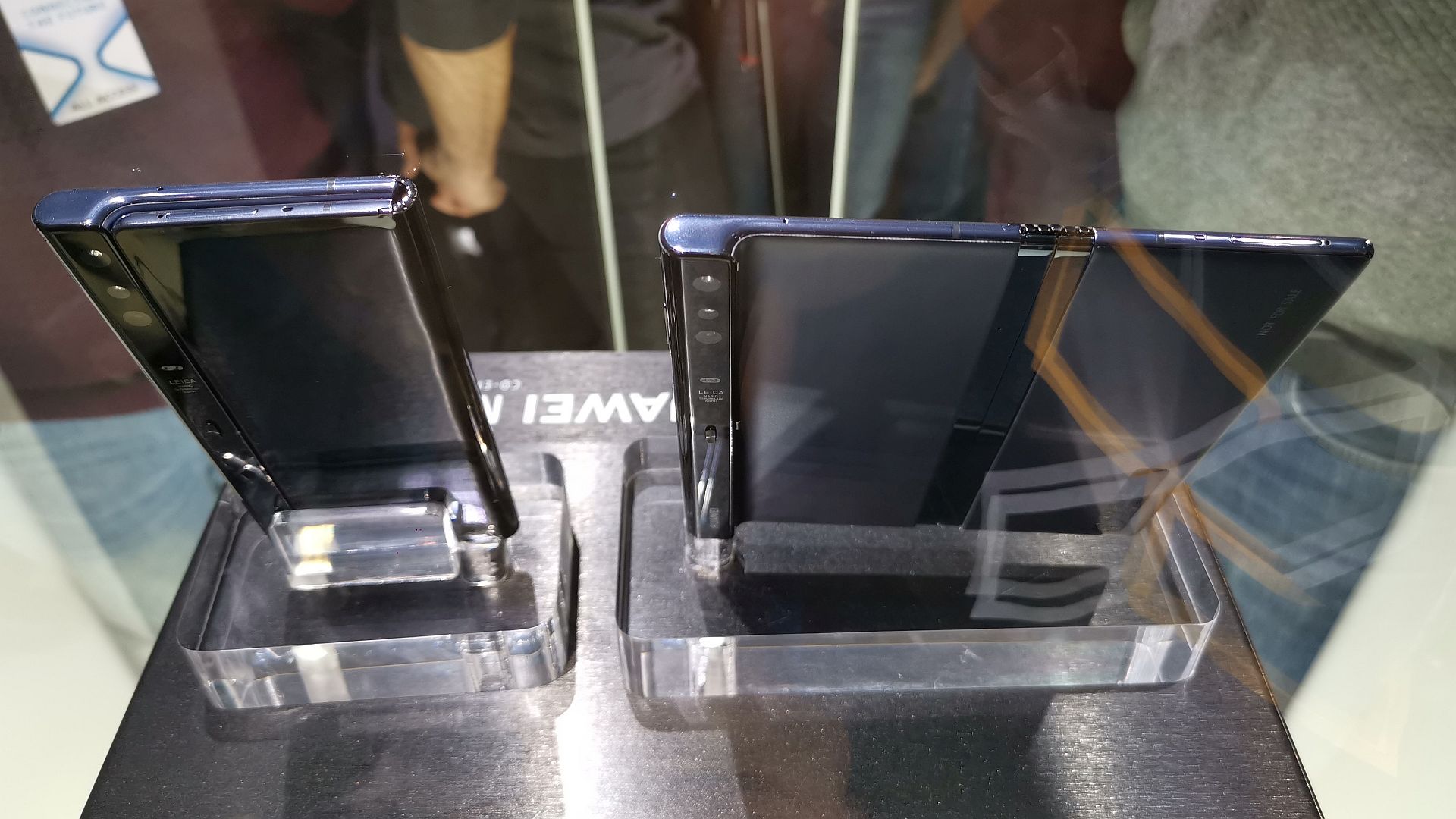
But I have questions
The main worry I have with the Mate X is durability, especially with its display and folding mechanism. The outward facing design exposes the display to the elements possibly making it prone to scratches. Huawei has developed a special case for the Mate X but it is more of a holder rather than a case. To unfold the Mate X you’ll still have to take the phone out of the case and this makes the sleek device bulky and cumbersome to use.
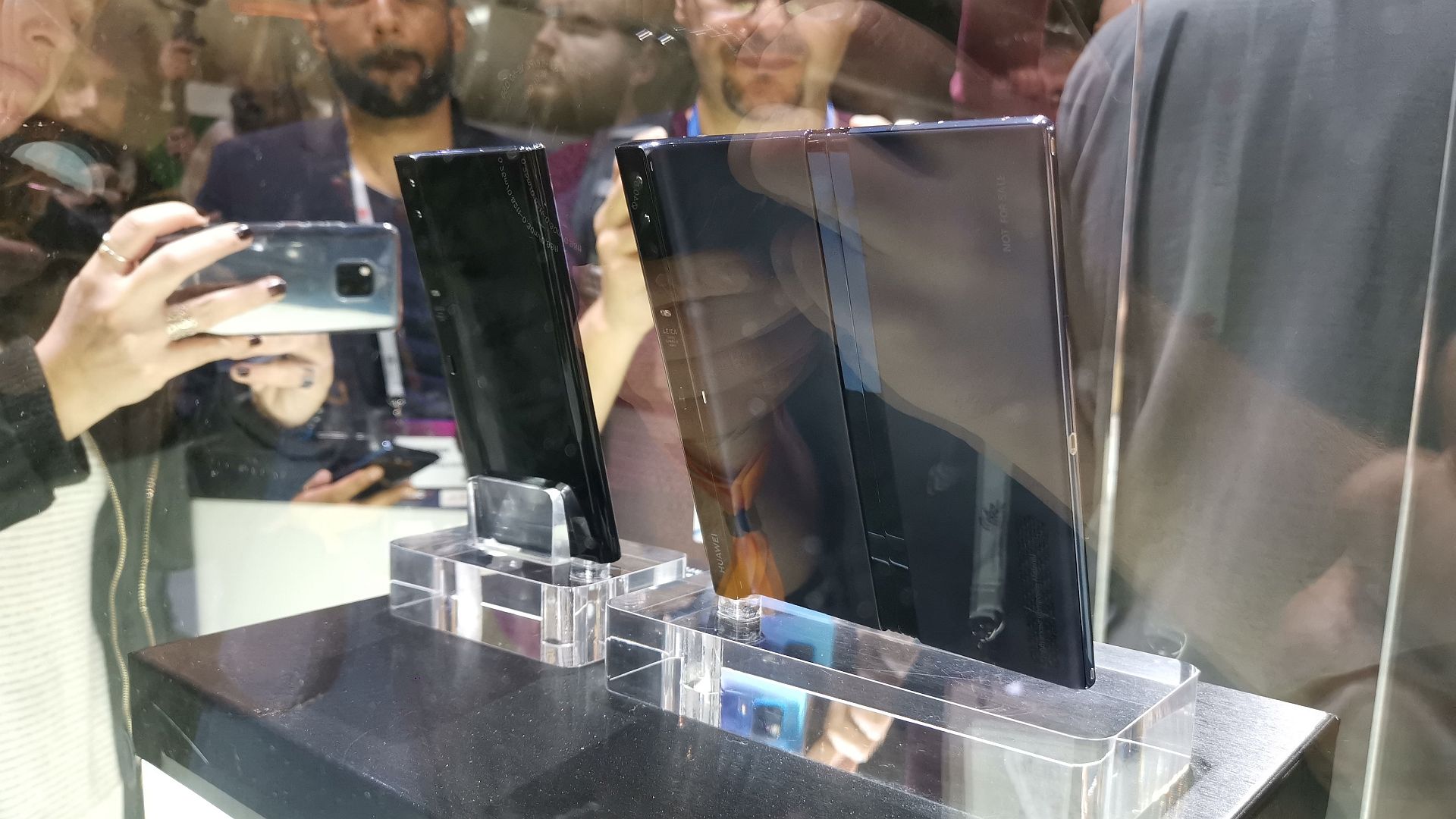
I also have a lot of questions when it comes to user interface. When folded, it looks like the Mate X will behave like a typical smartphone but things may turn complicated when you unfold the device. I assume the Mate X will operate much like a tablet when the 8-inch display is utilised but that is may not necessarily be a good thing because Android tablets are not that great to begin with. During the presentation, Huawei didn’t demonstrate how the device performs as a tablet which gives me very little reason to believe that the Mate X improve much on the Android tablet genre.
Then there’s the matter of battery life. While the 4,500mAh battery is among some of the largest you can get on a smartphone at the moment, how long it will last when the large 8-inch display is used to its fullest is unknown.
Worth the price?
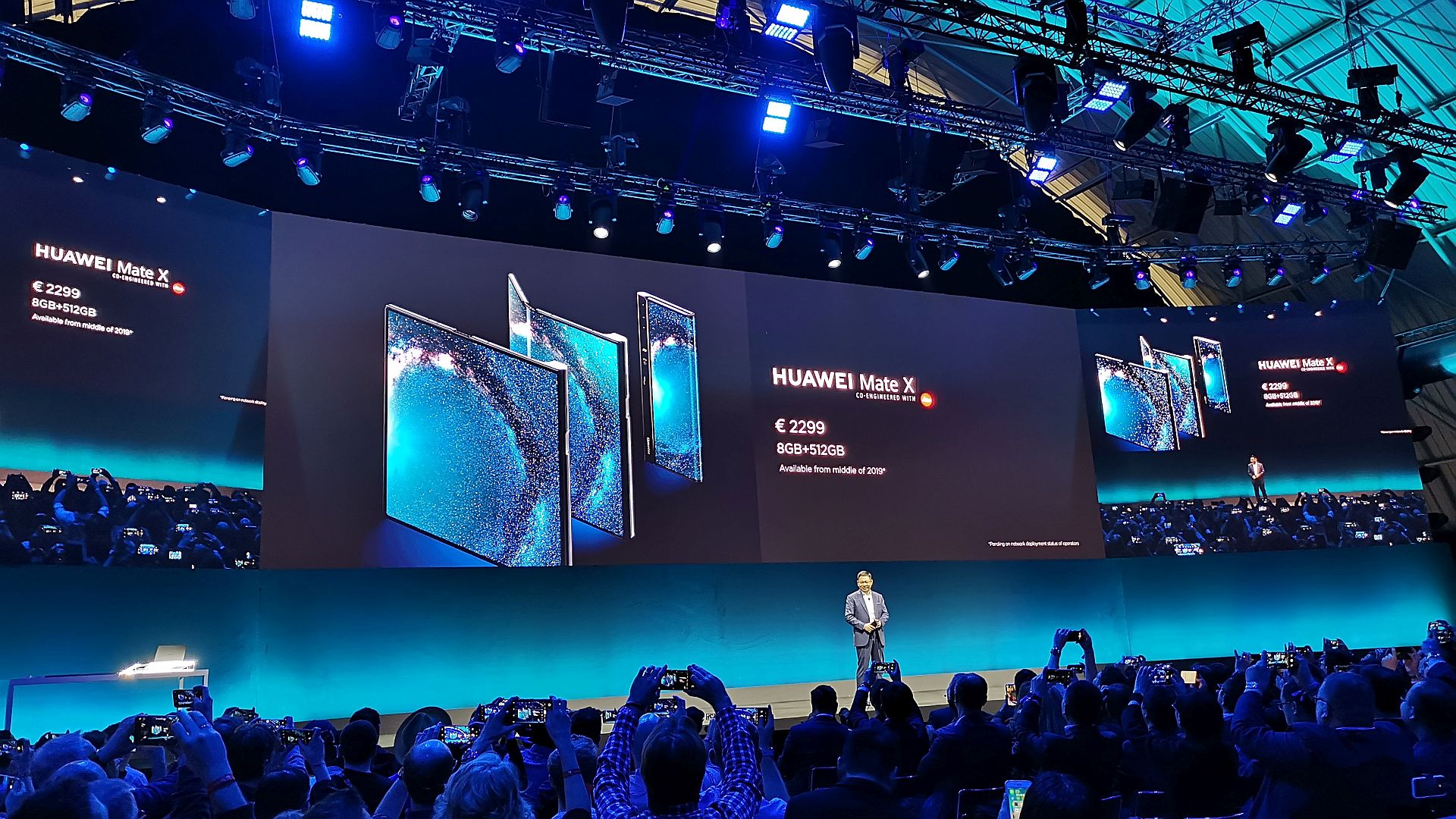
The Huawei Mate X is an impressive device no doubt, but it also ventures into unknown territory, this can be an attraction for some and
The Mate X will sell for EUR2,299 when if enters the market sometime in the middle of this year. That’s over RM10,607. Whether the device will be sold in Malaysia is yet to be determined. I want one, it looks good and the folding display is one of the best I’ve seen so far but is it worth the asking price?
With the Mate X, you hold the future in your hands, literally. As a tech junkie, I certainly see the appeal for a device like the Mate X but it is essentially still a smartphone with features and functions you can get in a device that costs 10 times less.
With the same money, you could get a 1TB 12-inch iPad Pro with mobile connectivity and have spare change for a decent smartphone. I realise, it’s not really a fair comparison but when you’re getting ready to plonk 10k on a purchase, things like this come into consideration.
But then again, all consideration goes out the window when you have the future in your hands.

